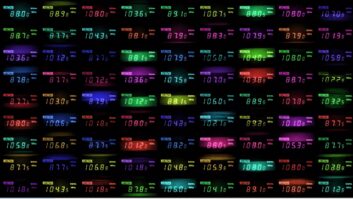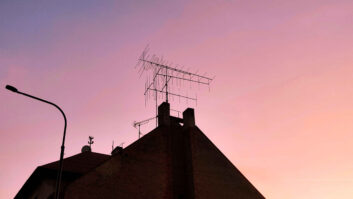OSLO, Norway — Last December, Norway completed its shutdown of FM radio in favor of DAB. The shutdown process wasn’t sudden: The country had started turning off FM transmitters on a regional basis starting in January 2017.
Six months have passed since the shutdown. So was it a success? To find out, Radio World spoke to Norway’s Ole Jørgen Torvmark and Svein Larsen.

The two men are on opposite sides of the Norwegian DAB debate. Torvmark is CEO of Digital Radio Norway, the Norwegian radio industry group that spearheaded the country’s transition to DAB. Larsen is CEO of Radio Metro, an Oslo-based private radio station that also operates Norwegian stations The Beat and Radio Rox.
To balance their views fairly, Radio World decided to reproduce the questions we posed to both of them, and the responses they provided.
Radio World: Since all of Norway’s FM stations switched off as of Dec. 13, what has been the impact of Norway’s embrace of DAB?
Jørgen Torvmark: The digital switchover has led to a much greater and more equal radio offering in the whole country. On FM there was only room for 5 national stations — on DAB there are 31 stations and all with better coverage. The public broadcaster, NRK, covers 99.7 percent of the population and commercial radio stations have 93 percent coverage.
Svein Larsen: It is basically only the national players who have been positive to DAB and they have been planning for it in many years. They have more music channels, but it does not represent more diversity.

The problem is also that it is only two commercial players that own all the capacity on the major block. No one else has been invited. This is a scandal and will be followed up. The polls show that the majority of the people are not satisfied.
RW: How has the replacement of FM by DAB affected radio listening in Norway?
Torvmark: The biggest change is the vast number of radio channels that all Norwegians can now choose from and one third of all radio listening now happens on the new stations. This shows that for many listeners the old FM stations were more tolerated than loved. We expected a decline in the total radio listening as a consequence of shutting off FM. But the listeners have done a remarkable job; 98 percent of the weekly listeners followed through the digital switchover, January 2017 compared with January 2018. For daily listening the decline has been approximately10 percentage points.
For daily listening, the figures for April show the difference is now only 7.7 percentage points.
Larsen: It has decreased approximately 20 percent, percent, but fortunately local radio has increased the listenership.
RW: Were Norwegian radio listeners provided with any financial help to buy DAB receivers?
Torvmark: The short answer is no. In 2011 the Norwegian parliament decided that radio should be digital, as are all other media channels. At the same time, they provided a plan and a timeline so the listeners and all involved industries would have time to prepare. Every year, long before the switchover process, Norwegians bought 700–800,000 radios. After 2011 people to a greater degree started to buy digital radios instead.
Larsen: No, not at all. The total cost for Norwegian consumers is 23 billion Norwegian kroner.
[Read: Norway’s DSO Makes Headway]
RW: There was resistance from some Norwegian FM broadcasters and listeners to the FM shut off. What has happened to their resistance since December?
Torvmark: The digital switchover has perhaps been the country’s largest technology shift ever, it would be intimidating for radio if it could be done without debate and resistance. The most important thing for broadcasters is of course that the listeners have followed on to digital platforms and second, that the new channels are used and appreciated.
The local radio sector has been skeptical about the digitizing of radio for years. But there are only a few commercial radio stations in the big cities that have been forced to switch off. All other local radio stations got a free extension of their FM licenses until at least 2022. We have seen a few negative polls but these are based on how people felt about losing FM – of course everyone would have liked to keep both DAB and FM if you could have kept on with the double distribution cost. But without a plan for switching off FM we would never been able to invest in national coverage and new channels. The poll that really matters is what people actually do, and we see that they still listen to radio and they love the new stations
Larsen: They, or should I say we, will continue the fight for the survival of FM locally. The fight has not ended. The main challenge now is to secure local radio to continue on FM also after 2022. The politicians are much more aware of the situation now than some years ago. Many of them are regretting the decision, but it is too late to bring national players back on FM.
RW: What lessons were learned from the Norwegian experience?
Torvmark:
- Collaboration is crucial, especially between the broadcasters.
- Digital radio must offer more content and the coverage must be at least as good as FM.
- A clear political plan makes the digital switch over possible, with a shut off date it gets easier for the listeners and all involved parties to plan for.
- DAB+ in cars is especially challenging. It is important to start working with all sides of the automotive industry as soon as possible.
- DAB+3 is something different, therefore there is a great need for information, especially among those who have the least interest in radio and who wait for as long as possible to upgrade or exchange their radio. You can never communicate too much.
- While all the national stations have moved to DAB+, keeping others on FM has created a confusing situation for listeners and slowed the conversion.
Larsen: The lesson is not to close down your FM system. Let the consumers decide; not politicians and bureaucracy.
[Read: Norway Begins Historic FM Switchoff]
RW: Was the move to DAB in Norway a success?
Torvmark: Yes! The Norwegian radio industry did not conduct the digital switch over to gain listeners or income in the short term but keep them in the long run. Radio in Norway is now far better equipped to compete for listeners and meet the digital future than it would have been with only five analogue radio stations.
Larsen: In my opinion, and it is also the opinion of the majority of the people as shown in opinion polls, this was not a success. It is not much added value in closing down the FM and replacing it with DAB. Radio must be available on all platforms if it wants to survive.







